PON Technologies
PON (Passive Optical Network) is a telecommunications technology used to facilitate the use of fiber to the end consumer. EPON is a standard developed by IEEE, and GPON is a standard developed by ITU-T. Both draw heavily from G.983 (BPON – Broadband Passive Optical Network) standards. They use WDM (Wavelength-Division Multiplexing), using one wavelength for downstream traffic and another for upstream traffic on a single mode fiber.
EPON VS. GPON
Layering
EPON (Ethernet Passive Optical Network)is based upon an enhanced version of IEEE 802.3 Ethernet, that was modified to support point-to-multipoint (P2MP) physical interfaces (PHYs) and Media Access Control (MAC). Ethernet traffic is transported natively, and all Ethernet features are fully supported.
GPON (Gigabit Passive Optical Networks)is a technique wherein Ethernet services are adapted at the OLT and ONU Ethernet interfaces and carried over an agnostic synchronous framing structure from end to end.

In EPON, Ethernet frames are carried natively on the PON with no changes or modifications. There is no extra adaption and encapsulation.
In GPON, Ethernet frames are encapsulated into GTC (GPON Transmission Convergence) Encapsulation Method (GEM) frames. GEM frames are, in turn, encapsulated into a SONET/SDH-like GTC frame (in both upstream and downstream directions) that is transported synchronously every 125 µsec over the PON.
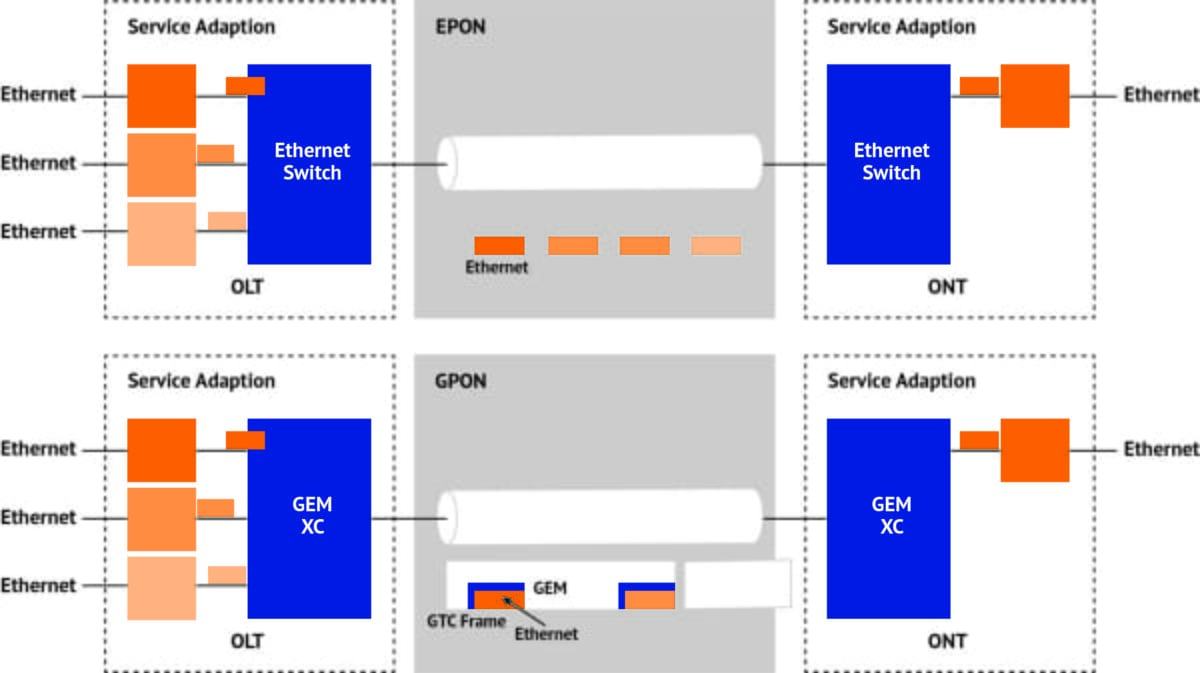
The downstream EPON MAC works in the same manner as a standard GbE MAC, where all Ethernet traffic is broadcast. Optical splitters are used to passively divide the same downstream signal among the ONU (alternatively referred to as ONT) endpoints.
The upstream EPON MAC is different from a standard GbE MAC in that it supports Time-Division Multiple Access (TDMA) scheduling. The upstream Ethernet bandwidth (before 8B/10B coding) is scheduled for use by each of the ONU endpoints using a TDMA algorithm controlled by the OLT. The full bandwidth is available to each endpoint for the duration of its scheduled time. Dynamic Bandwidth Allocation (DBA) algorithms are implemented by vendors to dynamically change the allocation for each ONU based on the amount of traffic it has queued to send.
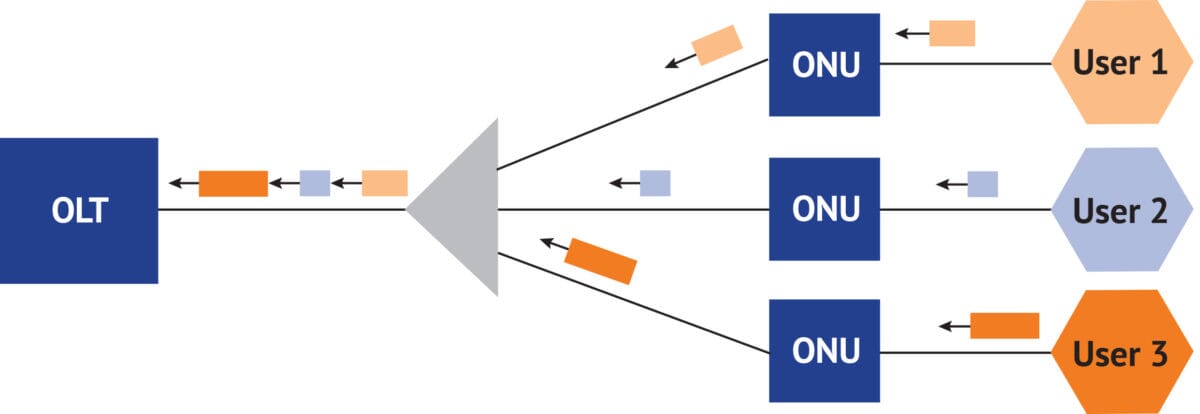
The GPON downstream MAC is derived from GFP-framed SONET, operating on a fixed time base of 125 µsecs. Time Division Multiplexing (TDM) is used to divide the bandwidth between ONUs. Optical splitters passively split the same downstream signal to each ONU endpoints [as per GEM port-ID]. (I don’t think this belongs here…since the split is passive there is no reference to GEM IDs.)
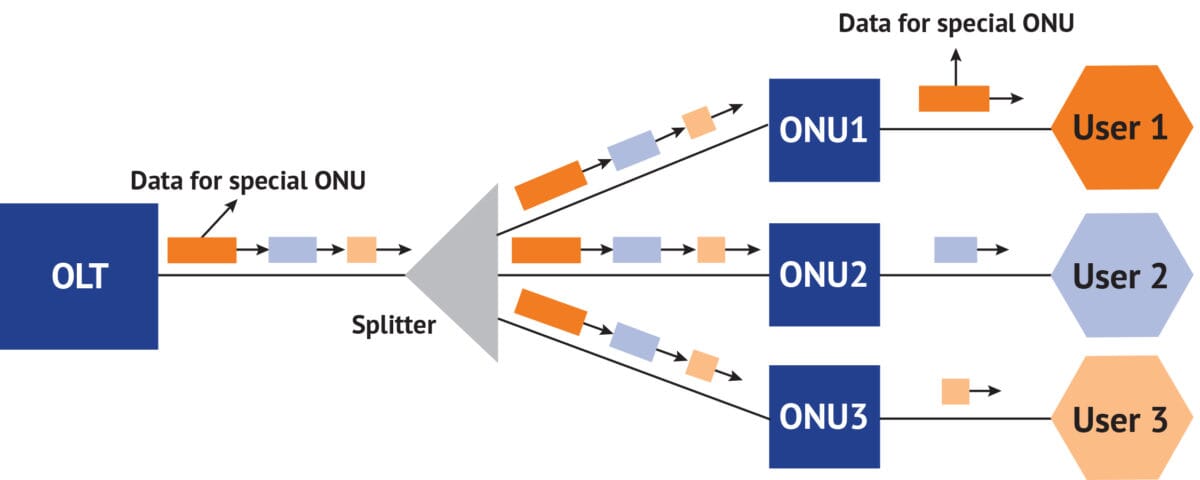
Upstream, TDMA scheduling is used, and incoming Ethernet traffic is again encapsulated in a similar manner to the downstream.
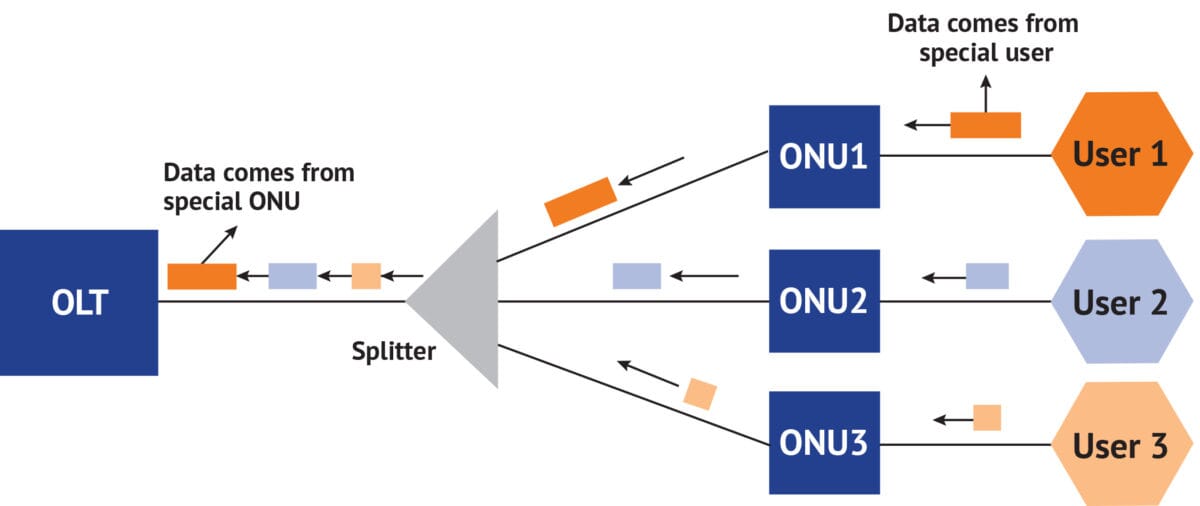
Service Hierarchy
EPON uses a Logical Link ID (LLID) to uniquely address an ONU. In addition, VLAN_IDs are used for further addressing in order to deliver VLAN-based services. In the downstream direction, the OLT inserts the LLID into the preamble of the frame to identify the destination ONU.
In GPON, one or more Traffic Containers (T-CONT) are created between the OLT and an ONU. This T-CONT allows for the emulation of a point-to-point virtual connection between the OLT and ONU and the subsequent TDM multiplexing of the downstream bandwidth between T-CONTs. Within each T-CONT there can exist multiple Port IDs to identify individual ONU ports within a single ONU.
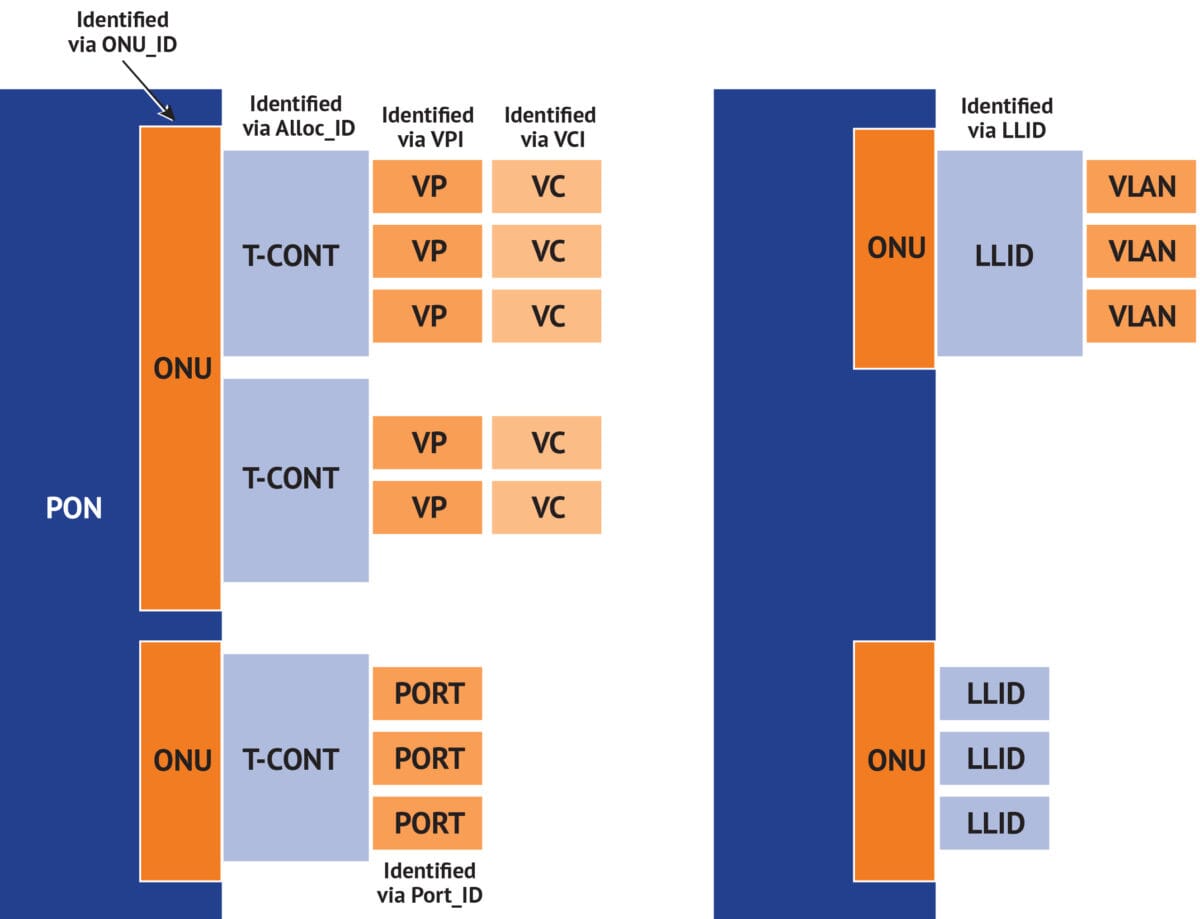
In EPON, grant messages are sent per LLID, as separate MAC-Control client frames (GATEs), between regular Ethernet frames. Each grant specifies the {LLID+Start+Length}.

In GPON, grant messages are carried in the downstream frame header. A map field within the header specifies the specific T-CONT, start and end {Alloc-ID+Start+End} for each granted upstream window (timeslot).
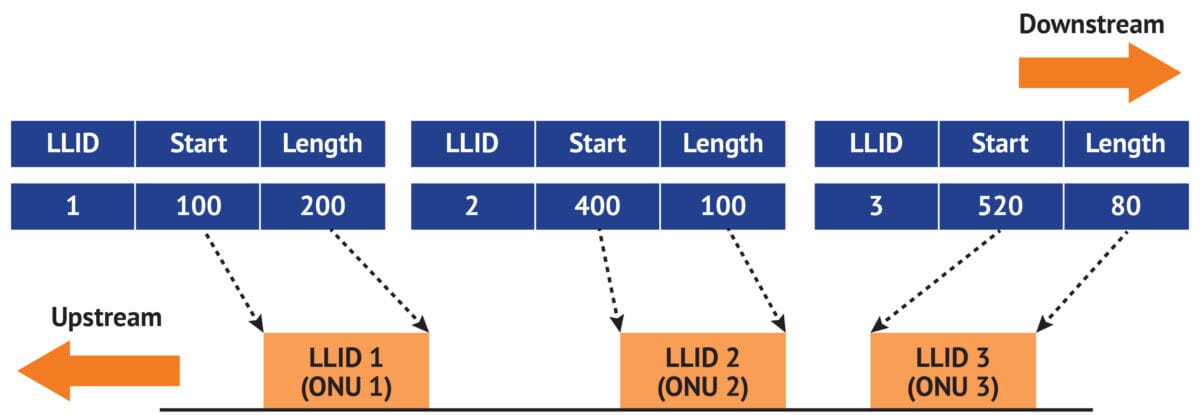
Control Messages
EPON utilizes IEEE 802.3ah OAM (also known as Ethernet in the First Mile or EFM) messages for provisioning, fault isolation, and performance monitoring; and MPCP (Multi-Point Control Protocol)GATEs/REPORTs for bandwidth granting.
In GPON, there are three different types of control messages: OMCI (ONU management and control interface), OAM, and PLOAM (Physical Layer Operations, Administration, and Maintenance).
OMCI – Provisioning of ONU service defining layers above the GTC
Embedded OAM – BW granting, encryption key switching, and DBA
PLOAM – Auto discovery and all other PMD and GTC management info. PLOAM messages are directed to ONTs or FF for broadcasts.
ONU Discovery and Activation
GPON uses the Serial Number (SN) for ONU authentication. EPON does not authenticate via the SN, but instead uses the ONU MAC. However, some vendor-specific EPON implementations optionally utilize the ONU’s SN.
Bandwidth
GPON is 2.448 Gbps in the downstream direction and 1.24416 Gbps in the upstream direction, whereas EPON is symmetrically 1.25 Gbps. (With turbo mode, the downstream EPON data rate is doubled to 2.5Gbps.)
Geographical Areas
EPON is the dominant FTTH solution in Japan, Korea, China, and other Asia-Pacific countries, meeting the demand for services such as high-speed Internet access, VoD, IPTV, etc. In other countries, especially in America, GPON is the preferred choice, as BPON and ATM infrastructure is more prevalent in this area, and GPON can coexist with the legacy PON systems.
Other Differences
GPON only defines the transport of Ethernet frames; there is no native Ethernet functionality. Ethernet switches must be placed outside the GPON OLTs, ONUs and ODN to provide any additional Ethernet capabilities.
GPON cannot support standard Ethernet bridging. Thus, in order to support standard bridging, there would need to be an Ethernet switch upstream of the OLT cross-connect, either externally or in an aggregation point in the same chassis.
Given its strong expertise in this domain, IP Infusion has designed and implemented for our customers and partners white box based EPON and XGS-PON solutions integrating with various network operating systems.

